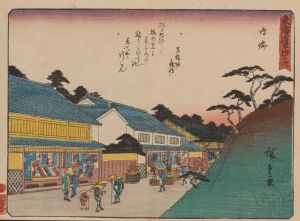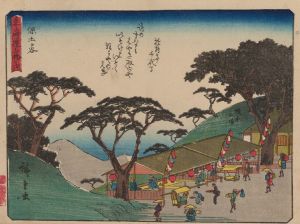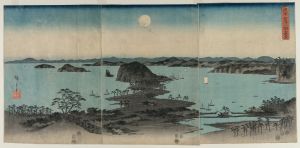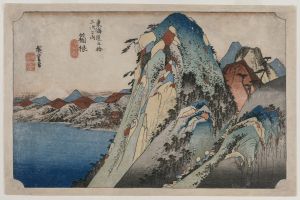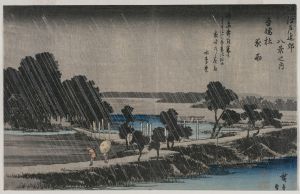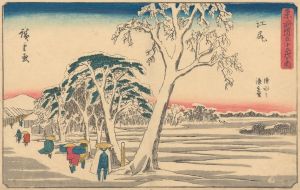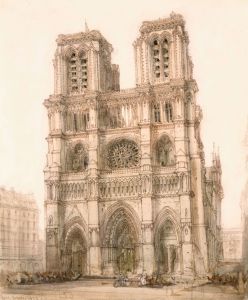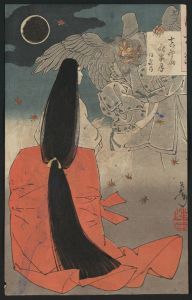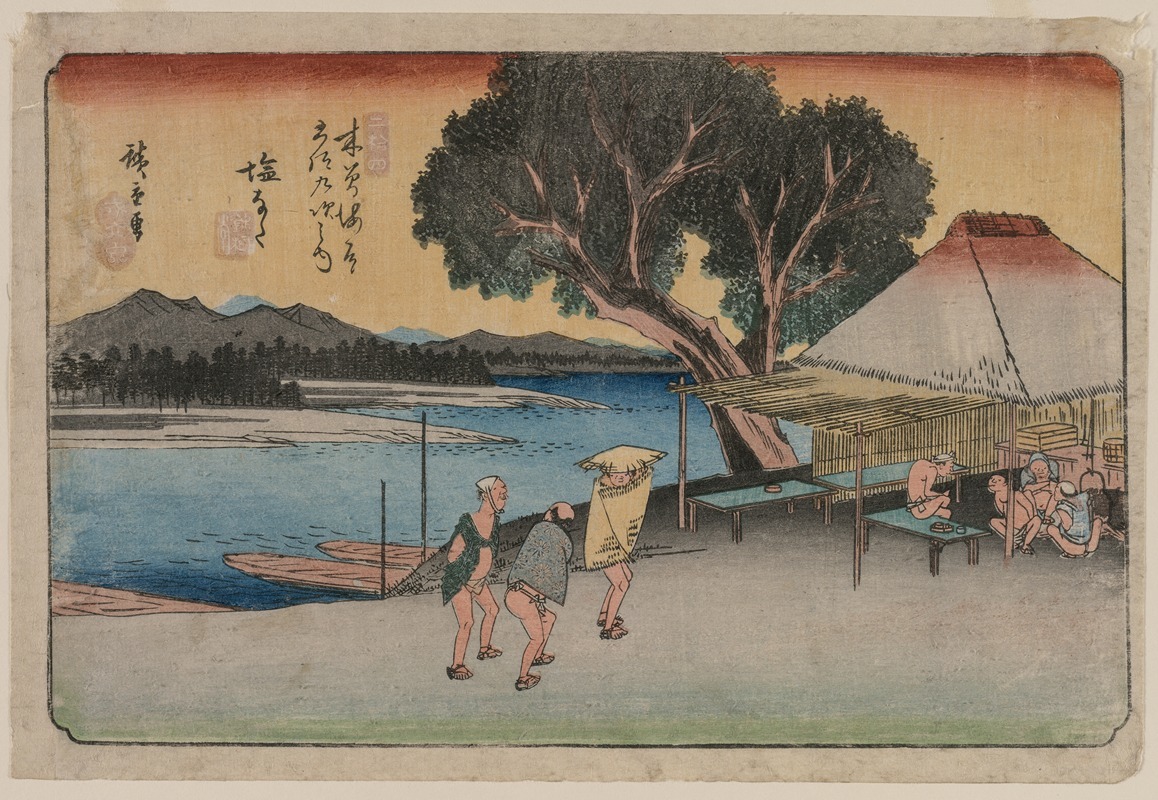
The Sixty-Nine Stations of the Kiso Highway: Shionata
A hand-painted replica of Andō Hiroshige’s masterpiece The Sixty-Nine Stations of the Kiso Highway: Shionata, meticulously crafted by professional artists to capture the true essence of the original. Each piece is created with museum-quality canvas and rare mineral pigments, carefully painted by experienced artists with delicate brushstrokes and rich, layered colors to perfectly recreate the texture of the original artwork. Unlike machine-printed reproductions, this hand-painted version brings the painting to life, infused with the artist’s emotions and skill in every stroke. Whether for personal collection or home decoration, it instantly elevates the artistic atmosphere of any space.
Andō Hiroshige, a renowned Japanese ukiyo-e artist of the Edo period, is celebrated for his landscape prints and depictions of the Tōkaidō and Kisokaidō roads. One of his notable works is "The Sixty-Nine Stations of the Kiso Highway," a series that illustrates the post stations along the Kisokaidō, also known as the Nakasendō, which was one of the five routes of the Edo period connecting Edo (modern-day Tokyo) with Kyoto. This series is a testament to Hiroshige's skill in capturing the essence of Japanese landscapes and the daily life of travelers during this period.
"The Sixty-Nine Stations of the Kiso Highway: Shionata" is one of the prints from this series. Shionata was one of the post stations along the Kisokaidō, located in what is now Nagano Prefecture. The post stations, or "shukuba," were established to provide lodging, food, and other services to travelers, including government officials, merchants, and pilgrims. These stations were vital for the transportation and communication network of the time.
Hiroshige's depiction of Shionata captures the serene and picturesque nature of the Japanese countryside. His use of color and composition reflects the changing seasons and the natural beauty of the landscape. The print typically features travelers and locals going about their daily activities, set against a backdrop of mountains, rivers, and rural scenery. Hiroshige's attention to detail and ability to convey a sense of movement and atmosphere are evident in this work.
The Kisokaidō series, including the Shionata print, is part of Hiroshige's broader exploration of travel and the natural world. His work was influenced by the ukiyo-e tradition, which focused on the "floating world" of urban pleasures, but Hiroshige expanded this to include the natural and rural landscapes of Japan. His prints were not only artistic expressions but also served as a form of travel literature, providing viewers with a visual journey through the country.
Hiroshige's work, including "The Sixty-Nine Stations of the Kiso Highway," played a significant role in popularizing the genre of landscape prints in Japan. His influence extended beyond Japan, impacting Western artists such as Vincent van Gogh and Claude Monet, who admired his use of perspective and color.
In summary, "The Sixty-Nine Stations of the Kiso Highway: Shionata" by Andō Hiroshige is a significant piece within the ukiyo-e tradition, capturing the essence of travel and the natural beauty of Japan during the Edo period. Hiroshige's work continues to be celebrated for its artistic merit and its contribution to the cultural and historical understanding of Japan's landscape and travel routes.





